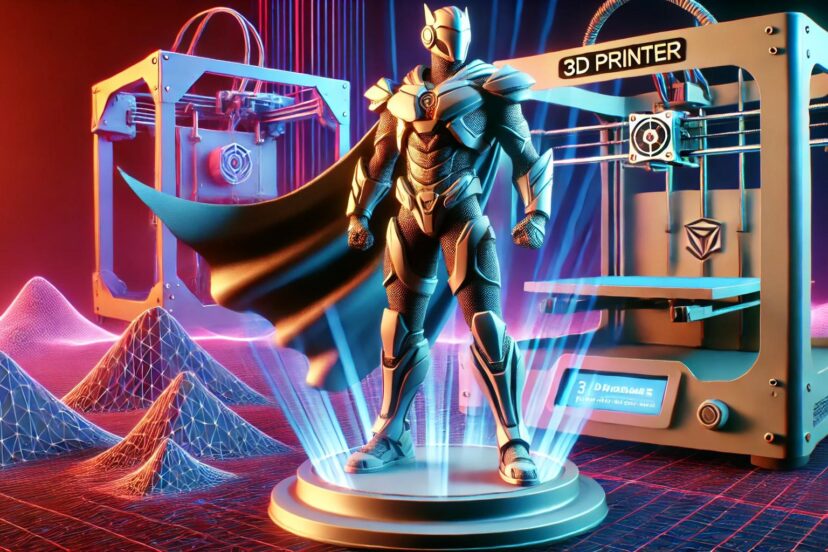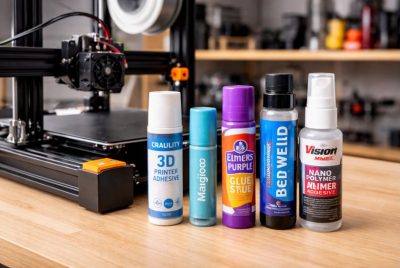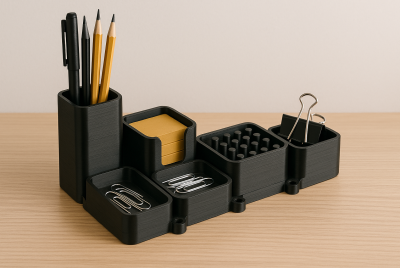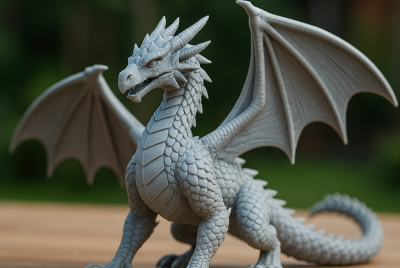3D Printed Toys: A New Era of Playtime
Let’s face the harsh truth, traditional toys can be a hit or miss, right? Not only are they often expensive, but sometimes, they break easily too. The worst part? Mass-produced plastic toys have an environmental impact and it’s not something you should ignore. Thankfully, 3D printed toys are becoming popular these days. With 3D printing, you can create toys that suit your interests just like your favorite action figure. Plus, they’re durable and eco-friendly. Let’s explore how they revolutionize the way we play!
What Are 3D Printed Toys?
3D printed toys are physical objects created using a 3D printer from a digital blueprint or design, layer-by-layer through a process called additive manufacturing. 3D-printed toys are marvels of modern engineering. Unlike traditional toys churned out in factories, these treasures are digitally designed and then brought to life. Think of it as sculpting in reverse—starting from nothing and building upward into something extraordinary. Remember the thrill of stacking blocks as a kid? It’s a bit like that but way cooler.
How Do 3D Printers Work?
3D printers work pretty simple. From a digital design, they create physical objects and bring your ideas to life. It’s a process called additive manufacturing. They print the design layer by layer to make a three-dimensional product from scratch. Watching it work is akin to seeing an artist paint a masterpiece in slow motion. It’s mesmerizing enough to make you forget time itself!
Why Are 3D Printed Toys So Popular?
The allure lies in their endless possibilities. Want a figurine that looks exactly like your pet dragon (or dog)? Consider it done, my friend. Need a puzzle that stumps even the sharpest minds? Easy-peasy!!! These toys are the epitome of personalization, offering a cost-effective, sustainable way to make your wildest ideas tangible.
The Perks of 3D Printed Toys
1. Boundless Creativity
Ever wandered through a toy store wishing for something they didn’t have? With 3D printing, the sky’s the limit. You’re not just a consumer; you’re the artist. (Think of yourself as the Michelangelo of playthings.)
2. Environmentally Conscious
In a world grappling with waste, 3D printing offers a refreshing solution. Many printers use biodegradable materials, making these toys as kind to the planet as they are to your wallet.
3. Budget-Friendly
Unique toys often come with hefty price tags. 3D printing flips the script, letting you create bespoke pieces without breaking the bank.
4. Educational Goldmine
Teaching kids (and yourself) about engineering, design, and creativity has never been this fun. Who knew playtime could double as a STEM lesson?
5. Instant Fixes
Lost the top hat from your board game? Instead of sulking or scouring eBay, just print a new one. Problem solved.
Types of 3D Printed Toys
1. Action Figures and Figurines
From superheroes to mythical beasts, you can bring any character from your imagination to life.
2. Brain-Busting Puzzles
Custom-made puzzles combine fun and intellect. Perfect for those who love a good challenge.
3. Toy Vehicles
Dream of a mini replica of your dream car or a plane to zoom across the kitchen table? Your wish is the printer’s command.
4. Dolls and Accessories
Create dolls with distinctive outfits or accessories that match your mood (or theirs).
5. Learning Tools
Shape up your geometry skills or explore science kits designed to spark curiosity.

How to Get Started with 3D Printing Toys
1. Find Your Printer
Choosing the right printer is like picking the perfect paintbrush—essential for the masterpiece you’re about to create.
2. Get Your Design
Download pre-made models or flex your creative muscles and design your own. (Think digital sculpting—minus the mess.)
3. Select Your Material
Whether it’s PLA for its eco-friendliness or something more robust for durability, the choice is yours.
4. Hit Start
Load your design, press print, and watch your creation come to life. It’s pure magic.
Recommended Products for 3D Printed Toys
If you’re ready to dive into the world of 3D printed toys, having the right tools and materials is essential. Here’s a list of recommended products to get you started:
3D Printers
- Creality Ender 3 V3 – Affordable and beginner-friendly with reliable performance.
- Prusa i3 MK3S+ – Known for its precision and high-quality results.
Filaments and Materials
- Hatchbox PLA Filament – Great for eco-friendly and versatile toy printing.
- Overture PETG Filament – Strong and durable for long-lasting toys.
Design Software
- Tinkercad – Simple and free for beginners to design 3D models.
- Fusion 360 – Advanced software for professional-grade toy designs.
Finishing Tools
- Sandpaper Kit – Smooth out rough edges for a polished finish.
- 3D Print Removal Tools – Safely detach prints from the printer bed.
Challenges in 3D Printing Toys
1. The Learning Curve
Every new skill has its hiccups, but the reward is worth it. (Besides, making mistakes is part of the adventure.)
2. Time-Consuming
Intricate toys, like Rome, cannot be built overnight. Patience, dear creator, patience.
3. Initial Costs
While the upfront investment can sting, the long-term savings and joy make it worthwhile.
Safety Tips for 3D Printed Toys
1. Non-Toxic Materials Only
Ensure materials are kid-safe, especially for little ones with a penchant for tasting their toys.
2. Smooth Surfaces
After printing, check for rough edges. A quick sanding ensures a safe play experience.
3. Avoid Small Parts
Design with safety in mind, especially for young adventurers.
Creative Ideas for 3D Printed Toys
- Board Game Tokens: Ever wanted to move your pawn as a tiny version of yourself? Now you can.
- Building Blocks: Like LEGO, but completely you.
- Miniature Worlds: Build tiny ecosystems for endless imaginative play.
- Interactive Robots: Add electronics for movement and lights—it’s a science experiment and toy in one.
- Seasonal Fun: Holiday-themed toys for festive flair.
3D Printed Toys and Sustainability
These toys offer a greener alternative to mass production. By recycling old designs into new creations, you’re not just saving money—you’re saving the planet. (Imagine turning yesterday’s broken toy into tomorrow’s treasure.)
The Disruptive Potential of 3D Printing in the Toy Industry
3D printing is revolutionizing the toy market by enabling consumers to create customized toys at home, leading to significant cost savings and reduced reliance on mass-produced products. Research published in Technologies highlights how platforms like MyMiniFactory are driving this change by offering accessible designs (read more here). Additionally, a study from Michigan Technological University emphasizes the economic and environmental advantages of this shift, predicting a decline in demand for traditional toys as more individuals embrace 3D printing (learn more). Together, these insights illustrate the profound impact of DIY home manufacturing on the toy sector.
Future Success of 3D Printed Toys
The road ahead is as limitless as your imagination. With faster printers, more materials, and accessible technology, the future of playtime looks bright.
A Personal Touch
Gifting a 3D printed toy isn’t just about the object—it’s about the thought and effort behind it. Imagine handing someone a toy you designed just for them. It’s not just a gift; it’s a story.
Conclusion
3D printed toys are a revolution, transforming how we play, learn, and connect. Whether you’re crafting for fun, education, or gifts, this technology invites you to explore the boundless realms of imagination. So, why not take the leap and start creating today? After all, the only boundary is your creativity so go ahead and print the toy you want!
FAQs
1. Can kids design their own 3D printed toys?
Absolutely! Many beginner-friendly software programs are perfect for kids. It’s like giving them a digital sketchbook where their creativity can run wild. (Bonus: It’s mess-free!)
2. What’s the average cost of a 3D printer?
Prices vary, but entry-level printers start around $200. If you’re looking for more advanced features, expect to spend between $500 and $2,000. (Think of it as an investment in endless creativity.)
3. How long would it take you to print a toy?
It depends on the design’s size and intricacy. A small toy might take a couple of hours, while larger, intricate pieces could need a full day. (Patience makes the reward even sweeter!)
4. Are 3D printed toys durable?
Yes! When printed with sturdy materials like ABS or PETG, these toys can withstand a lot of playtime adventures. (Maybe even sibling tug-of-wars.)
5. Can I sell 3D printed toys?
Definitely, but be cautious of copyright laws. Stick to original designs or use royalty-free models, and you’re good to go. (Plus, imagine turning your hobby into a side hustle!)




